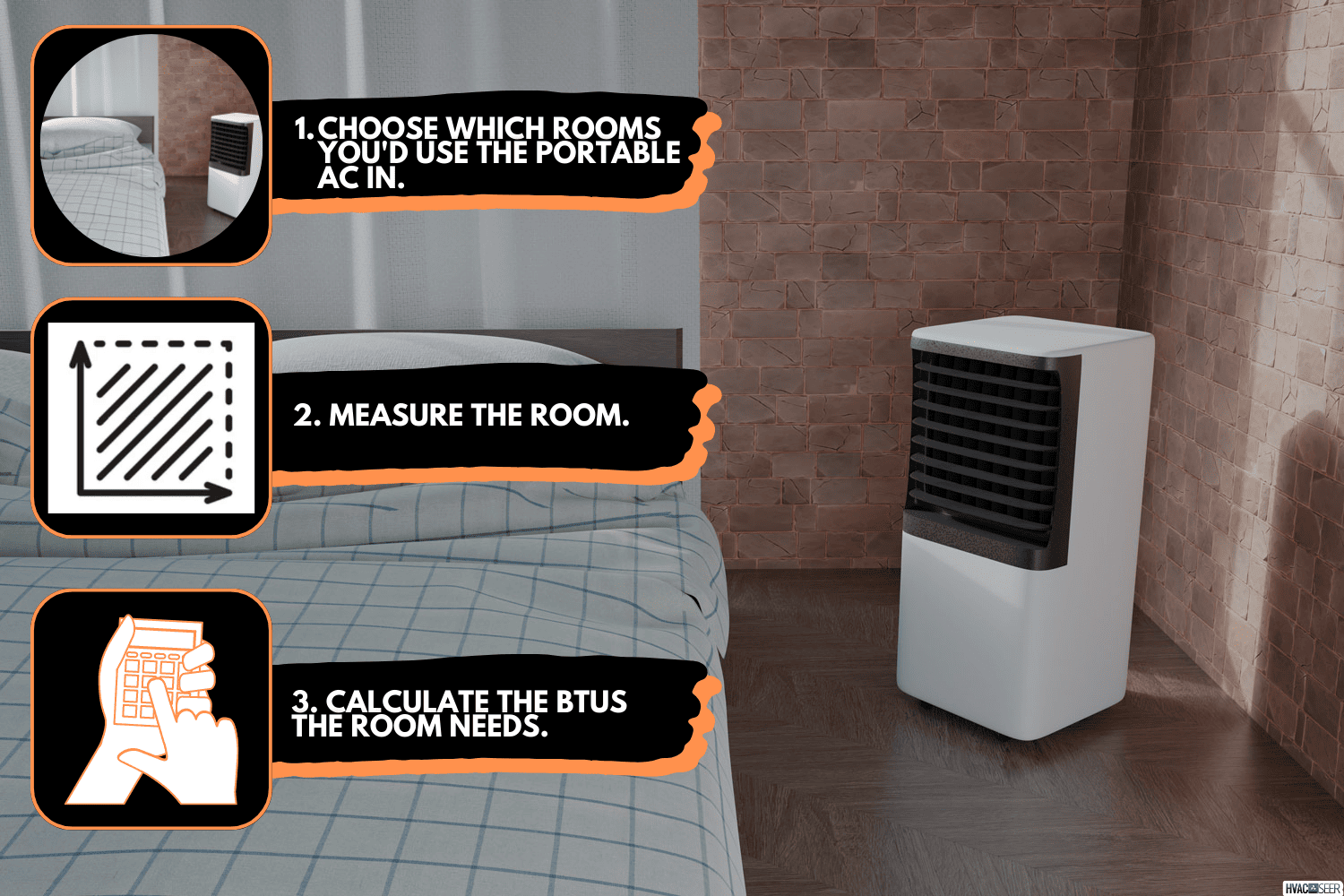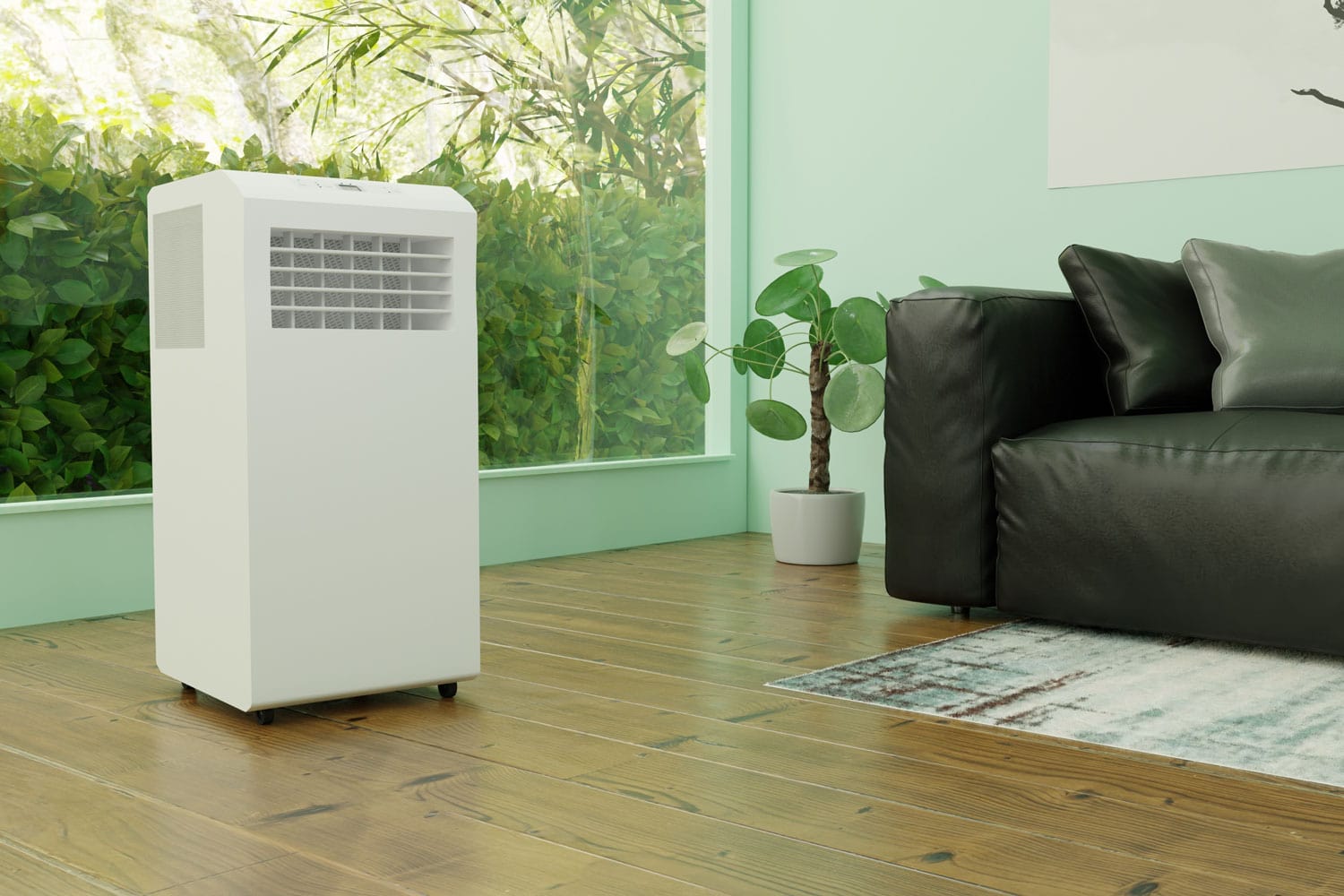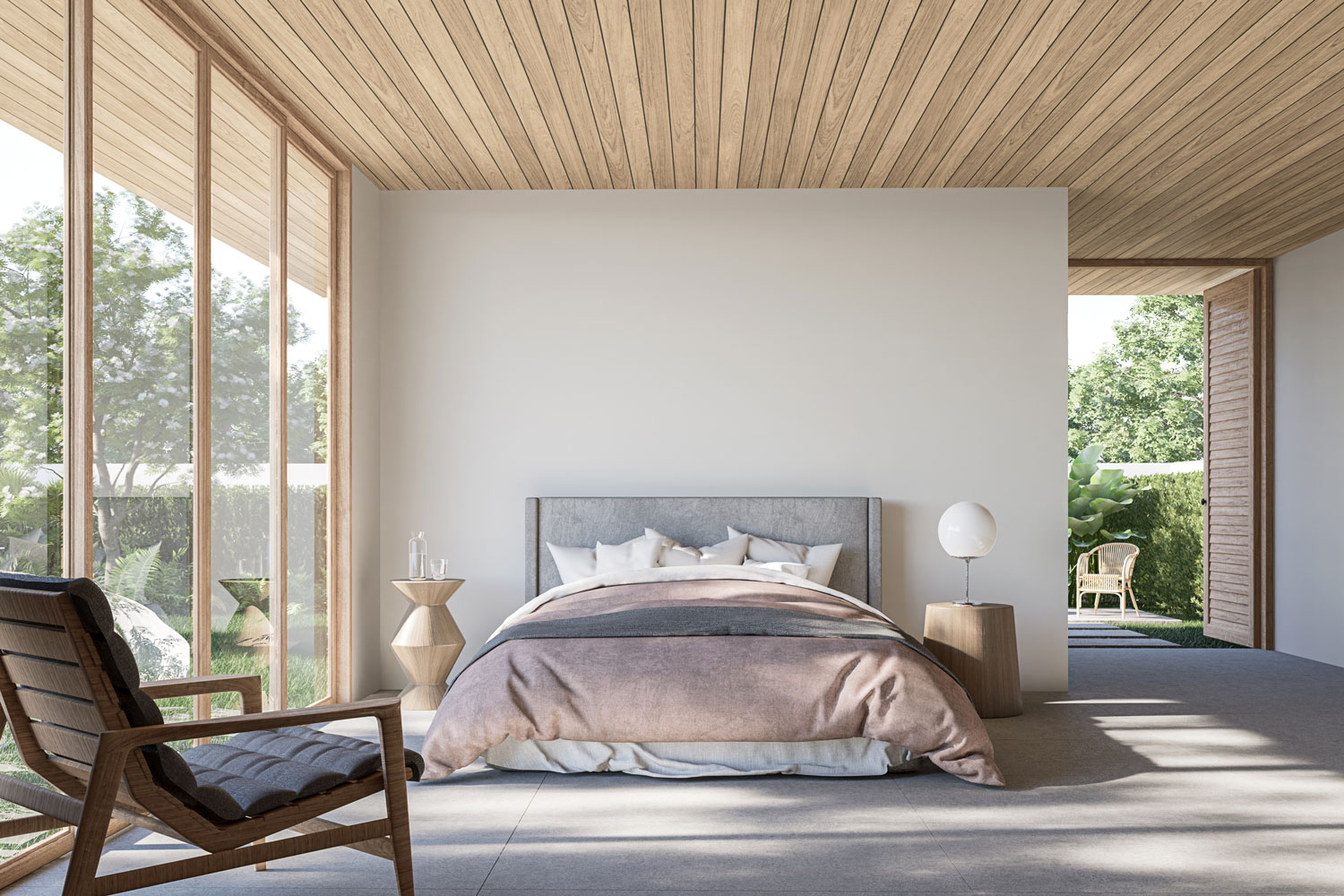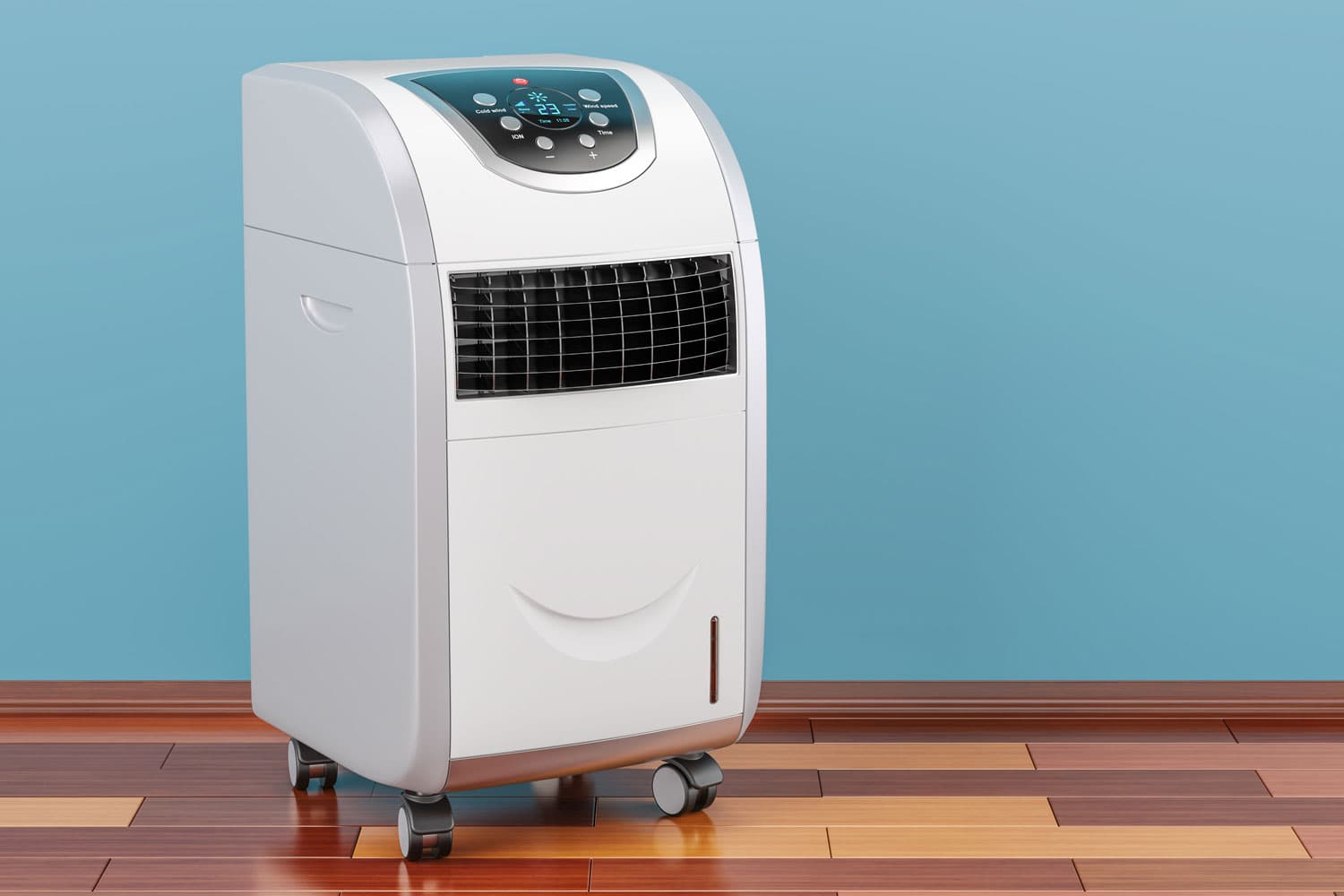Portable AC units make your room nice and cool, but it is crucial to size them correctly to make sure they can effectively cool a given space. All rooms are different in width, length, and other factors—all these influence what portable AC size is right for you. We're here to help you find out which specific AC size you should get, so scroll down to learn more!
Generally, each square foot of your room requires 20 British Thermal Units (BTU). To calculate the exact AC size or BTUs you need, here's what you should do:
- Choose which rooms you'd use the portable AC in.
- Measure the room.
- Calculate the BTUs the room needs.
Calculating what portable AC size you need doesn't require complicated steps. But, to ensure that you do it right, it's essential to know how to do each step. Don't worry; we researched it just for you. Additionally, there are other considerations you must take when sizing a portable air conditioner, so we also included them. Read the guides we prepared for you below.

Guide To Sizing A Portable AC Unit
The right portable size will ensure you don't waste energy as the unit runs. That's why before you buy your AC, read this simple and easy-to-follow guide first:

1. Choose Which Rooms You'd Use The Portable AC In
The good thing about portable ACs is that you can move them to different rooms. But, though this makes it convenient, this may also confuse you at first as sizing requires measuring a space where you'd use it.
So what should you do? The answer is simple; narrow down which rooms you'd want to use the portable AC in.
While doing so, ensure that the sizes of the space you'd use it in don't have a big difference in their overall length and width. Then, pick the largest one to measure for sizing the unit among your chosen rooms.
Note that you shouldn't use the measurements of the smallest room in your house or area while doing this. The largest room should be what's measured, as you can lower the unit's settings if you use it in a smaller space.
2. Measure The Room

Using a tape measure, get your room's length and width.
First, remove all the furniture in your room, especially where your walls are. Then, have someone help you as you secure an end of your tape measure on the floor against one of your walls.
Keep extending the tape until the end of the wall. Repeat this until you measure all the corners of your room.
List down how many feet your room's length and width are on a piece of paper to multiply them. The answer you get would then be your room's overall size in square feet.
Click here to check out this tape measure on Amazon.
3. Calculate The BTUs The Room Needs
After measuring your room, you can calculate the size of your portable AC unit. To do this, multiply the total area of your space by 20 BTU. The answer you get from this will then be the correct size for your air conditioner.
Factors You Should Consider When Sizing Portable AC Unit
The size of your room isn't the only thing you should consider when sizing a portable AC. That's why to help you out, we narrowed down a list of them here:
Height Of Ceiling

There are houses with higher ceilings than the standard measurement. That's why you should consider that your room size alone isn't the only consideration you should measure.
Use a tape measure to see if your area's ceiling is above eight feet. If it is, you must increase the BTU capacity of your portable AC by ten percent for each excess foot measured. You won't need to size your AC up if it isn't.
Heat In Your Room
Is your space usually hotter than other parts of your house? Kitchens, for instance, typically emit higher amounts of heat than other rooms. If so, you will need to increase the size of your portable AC to cool down the area efficiently.
Assess if where you'd place your portable AC is too warm. Then, if it is, increase the BTU rating of your unit accordingly (commonly by adding 4000 BTU).
Meanwhile, if your area is colder, you will not need to size your unit.
Number Of Windows

Rooms with more or large windows can affect the space's temperature, which is why you must consider this when sizing your AC. These windows will allow more heat or cold to pass through in the area, affecting your unit's efficiency and performance.
That's why for spaces where sunlight directly passes through windows, it's best to increase the BTU capacity of your AC by at least ten percent.
On the other hand, you should reduce the BTU capacity of your unit by ten percent for rooms with little to no windows.
Insulation

Each house and areas are different from one another, and this includes how much insulation there is in it.
For instance, the materials that construct your space may be thicker or thinner than other houses or rooms. Or, you may have more window coverings.
Well-insulated rooms are easier to cool, so you wouldn't need to size up your AC. Meanwhile, those with poor insulation need a higher BTU rating.
Check out this window insulator kit on Amazon.
Number Of People Usually In The Area
Rooms or areas used by two or even more people need bigger portable AC units. Each person releases heat from their body, causing a space to become hotter than usual.
That's why if many people typically use the room where you'll put your AC, you must size up your unit by 600 BTU per person.
How To Check A Portable AC Unit's BTU Capacity

After determining what portable AC size your room requires, it's time to buy it. But how do you check the BTU capacity of an AC to make sure you buy the right size?
First, find the unit's label. On its label, you'll see a series of letters and digits. The first section (usually composed of five characters) tells you about what model the AC is.
Then, after that first section, you'll see a series consisting of two to three-digit; this is the BTU capacity of the unit written in thousandths.
For example, if "048" is on it, the BTU capacity is 48,000. After determining this, you can check if it's the BTU rating you need.
Tap here to see this portable air conditioner on Amazon.
What Happens If AC Is Incorrectly Sized?

The right AC size is vital to quickly cool down a room without wasting energy. That's why if you buy the wrong AC size, you may experience some adverse effects.
Air conditioners that are too big for a room will undeniably cool your space faster, but this is not necessarily good.
It also means the unit will cycle on and off quickly, before the AC has a chance to complete its cycle. It will then cause damage to your air conditioner, causing it to become less efficient as it functions.
Meanwhile, air conditioners that are too small for an area will not be able to cool down the space effectively, forcing them to run longer. It will generate an even higher electricity bill for you and wear down the unit.
In Closing
Calculating how big of a portable AC you need is relatively easy, but it requires some effort.
Determining the size of your AC doesn't mean measuring how much weight it should have. Instead, it's estimating how many BTUs your unit must have though higher BTU capacities will also mean a bigger AC.
To calculate what portable AC size you need, you only need to choose the largest room you plan to use the unit in, then measure how many square feet it is, then finally calculate it by multiplying the total area of your space by 20 BTU.
However, you must also note that other factors may increase or decrease the BTU capacity you previously calculated, such as the height of your ceiling, heat in the room, number of windows and insulation in it, and how many occupants there are in the area.
After checking for all of these, you're ready to buy your portable AC. But, for more insights, read these posts about measuring the sizes of other parts your air conditioner needs too:



